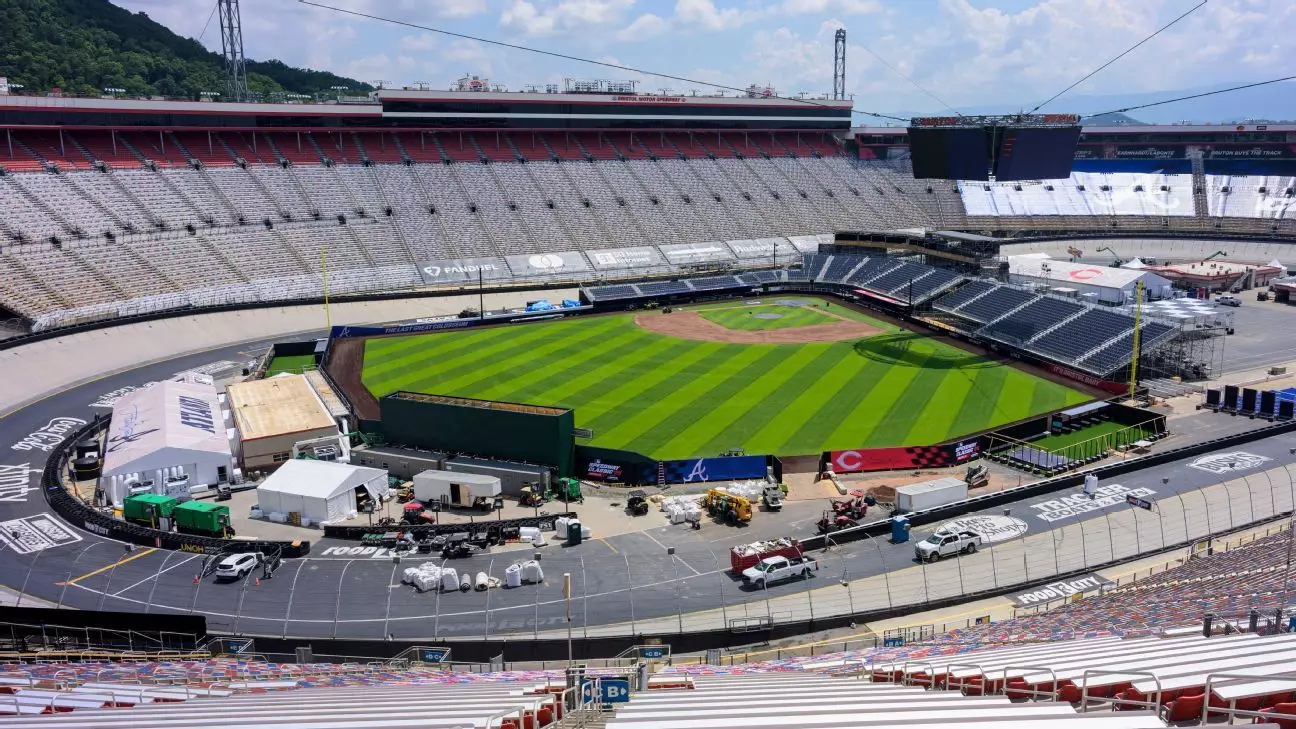Bristol Motor Speedway, renowned as a legendary motorsports sanctuary, recently blossomed into a cultural hub that defied expectations. When the Atlanta Braves and Cincinnati Reds stepped onto the infield to play baseball, the world watched a spectacle of innovation and adaptability. Yet, beneath this remarkable feat lies a complex dance of logistics, expertise, and relentless effort. The transition was not merely a matter of laying down a baseball diamond; it was a bold statement of ingenuity. This event demonstrated that even racetracks with a rich NASCAR heritage can transform into bustling sports venues capable of hosting major league baseball games. It was a display of flexibility that challenged preconceived notions about the exclusivity of such venues, illustrating that the spirit of competition and entertainment can thrive in unconventional spaces.
Engineering Marvels and Logistical Challenges
Creating a temporary baseball field within a racing arena is no small feat. The conversion process involved extensive planning, from reshaping the terrain to ensuring the safety and functionality of the new playing surface. Employing 17,500 tons of gravel and 340 tons of Pennsylvania clay, the organizers meticulously leveled the infield, transforming the asphalt into a baseball sanctuary. The task of constructing clubhouses with showers, batting cages, and broadcasting booths further added layers of intricacy.
Rebuilding the infield required patience, as poured concrete walls demand curing time—a factor that stretched the schedule and tested the team’s coordination. Swift and his team had to manage a quick turnaround, stripping down the baseball setup immediately after the game to prepare for NASCAR’s return. This rapid disassembly highlighted the logistical mastery involved—materials like gravel and plywood found new life as part of Bristol’s recovery efforts, reflecting a conscious effort to reuse resources in an environmentally responsible manner.
The challenge lay not just in build and rebuild, but in doing so under a tight timetable. The targeted reversion date of September 7 demanded precision, ensuring that the track would be race-ready even if some finishing touches, like paint, remained incomplete. This process showcased a blend of engineering precision, resourcefulness, and logistical finesse, pushing the boundaries of what’s traditionally possible at a race track.
A New Era for Bristol: Versatility and Vision
Bristol’s adaptability signals a broader shift in how sports venues view themselves—not just as specialized spaces but as multi-purpose arenas capable of hosting diverse events. The 2016 college football game that drew nearly 157,000 spectators proved that the capacity for large-scale sports events exists in this historic speedway. Now, after hosting a record-breaking MLB game, the venue’s potential seems limitless.
The recent MLB event demonstrated that the barriers between different sports disciplines are more permeable than ever. Bristol’s flexibility captured the imagination of sports leagues, including the NHL, which is reportedly exploring opportunities to utilize the facility. This willingness to accommodate different sports underscores an innovative mindset that values resilience, resourcefulness, and audience engagement.
Furthermore, the successful hosting of such a high-profile event solidifies Bristol’s position as a versatile sports hub, capable of attracting diverse audiences and expanding its legacy beyond just NASCAR. It challenges the idea that iconic racetracks are confined to one purpose, opening the door for a future where multi-use venues become the norm rather than the exception.
Implications and Future Opportunities
Bristol’s recent transformation is more than a temporary feat; it’s a blueprint for future event hosting in complex venues. The ability to rapidly adapt from baseball to racing signifies a strategic evolution that could inspire other venues worldwide. The resourcefulness demonstrated by repurposing materials like gravel and plywood not only adheres to sustainability principles but also demonstrates a practical solution to logistical constraints.
Looking ahead, the potential hosting of NHL events at Bristol could redefine the landscape of sports entertainment. Such cross-sport versatility offers new revenue streams and broadens audience reach. It encourages sports administrators to think outside traditional paradigms, emphasizing adaptability without compromising quality or safety.
This experience also underscores the importance of leadership, innovation, and teamwork. The swift transition required meticulous planning, technical expertise, and seamless execution—all areas where Bristol’s organizers excelled. As sports technology and event management techniques continue to evolve, venues that embrace this flexible approach will likely become the standard rather than the exception.
Bristol Motor Speedway’s bold Malleable use of space not only set a new precedent but also ignited a conversation about the future of sports venues. They can be culturally significant, adaptable, and resilient, serving multiple purposes while fostering community engagement and economic vitality. The lessons learned here extend beyond racing and baseball, beckoning a future where sports venues are collaborative, innovative, and endlessly versatile.

